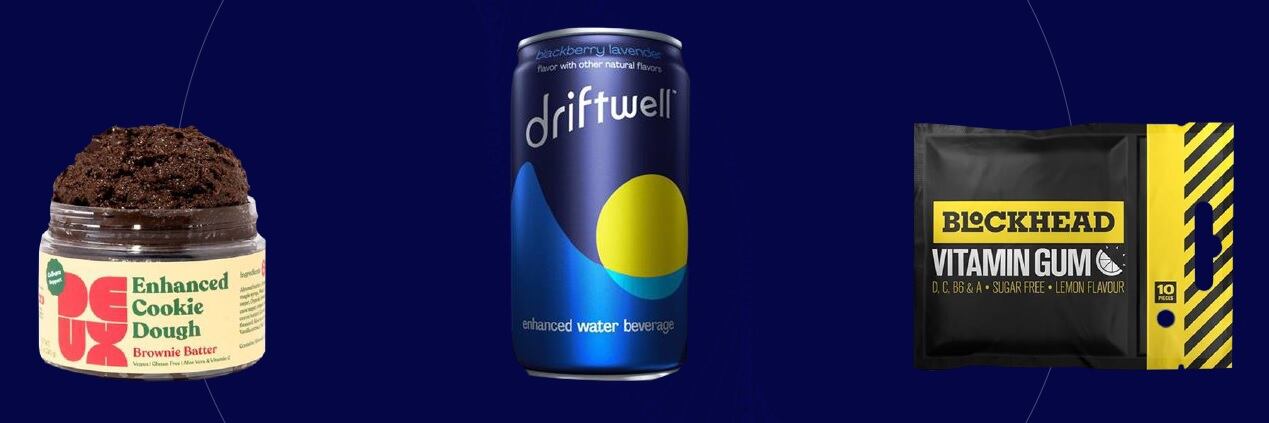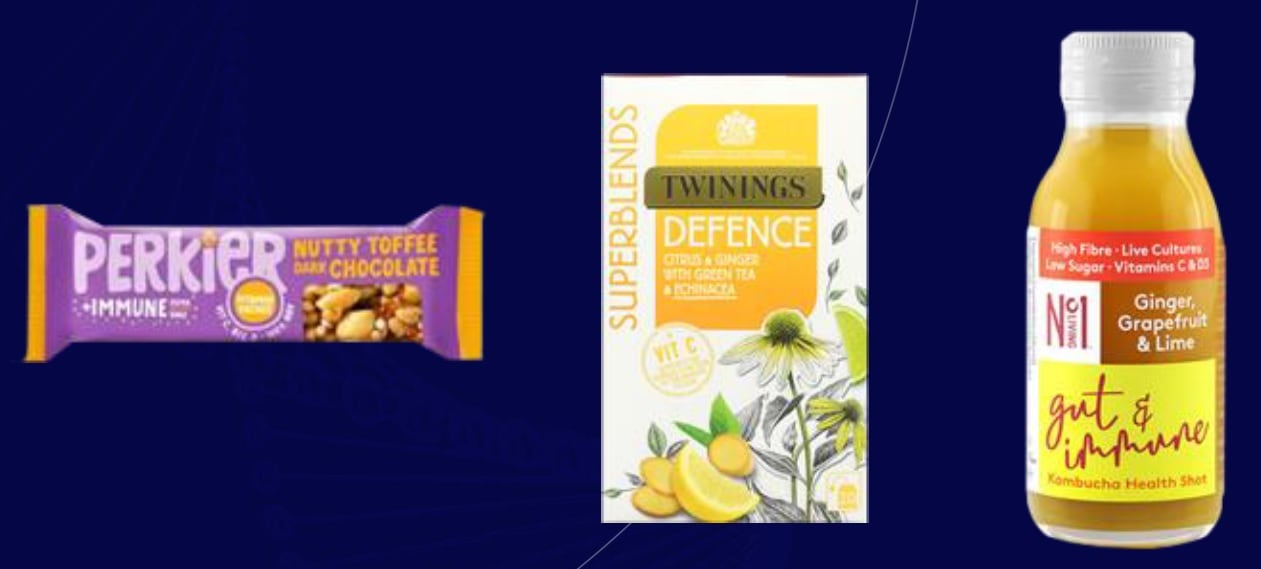The research agency hosted an afternoon of functional food focused webinars on Wednesday (October 20) in which the team revealed recent data revealing the perceptions of participants from across the UK and US.
Jennifer Brown, SVP at MMR, explained their data reveals that the product category has an impact on whether the consumer will believe the product has a health benefits. For example, the data shows that breakfast cereals are a category in which consumers are very likely to believe health claims in general, and especially claims relating to energy levels, bone, heart and gut health, and blood pressure.
Fruit juice and smoothies are also categories in which consumers are open to believing products provide added health benefits. Claims considered most intuitive to this category are: immune, skin, heart and brain health and energy levels.
Familiarity and efficacy hand-in-hand
The research also reveals that 54% of consumers say they are using the web more frequently to search for ingredients. As such, MMR looked into what ingredients were the most searched over the last two years (semrush.com). These data reveal some huge increases in searches for certain ingredients, with vitamin C leading the way with a 245% search increase between 2019 and 2021.
This well-established ingredient is followed by the sports nutrition amino acid ingredient L-Tyrosine, with searches up 191% in the two-year period, and Ashwaghanda up 183%. Other ingredients showing a big growth include hyalauronic acid (up 126%), guarana (up 110%), vitamin D (up 101%), and chamomile (up 100%).
Reishi mushroom, adaptogens, CBD, dietary fibre and l-theanine have also seen substantial growth.
These data provide some insight into potential up-and-coming ingredients in the functional foods space.
Brown told webinar attendees that when asking consumers how efficacious they thought ingredients were, there was a clear link between efficacy and familiarity. The ingredients rated as the most effective included: calcium, protein, vitamin C, vitamin D, probiotics, antioxidants, aloe vera, green tea extract, zinc and ginger.
Ingredients which have been hitting the headlines regularly but which are less common in the mainstream market, such as adaptogens, ashwagandha, nootropics, polyphenols, Reishi and Lion’s Mane, were rated much lower for perceived efficacy.
Brown says there is clearly a growing interest in these ingredients but brands innovating with these should be ready to work harder with their communication.
Mushroom mindset
Speaking about the growing opportunity around medicinal mushrooms, Adin Heller, senior qualitative research manager at MMR, explained that MMR has conducted research to discover what perceptions consumers have about functional products with these ingredients.
He said some of the most popular product categories in this space were coffee, snack bars and granola, thanks to the enjoyable taste and perceived healthiness of the products.
In-line with MMR's previously noted research into categories, consumers tended to perceive the coffees as being more efficacious than the snacks or foods as they believed that providing the functional ingredients in a liquid form would provide a more concentrated dose, without so many additional ingredients getting in the way.
Adding to Brown’s point about familiarity influencing the perception of efficacy, Heller said: “Awareness definitely has a link to how efficacious they are seen to be so as awareness of medicinal mushrooms grows and education increases through word-of-mouth, on-pack information, and online research, this will all help as this is a natural ingredient consumers are willing to believe will provide benefits.”
Packing a health punch
Karen Poole, from the brand consultancy Huxly Global, also joined the webinar to discuss the firm’s recent research into consumer perceptions of packaging and how packaging influences their perception of the product’s health benefits.
Participants from the UK and US were shown images of 20 functional food and drink products and asked to rate them for their perceived effectiveness. When comparing the responses of UK and US consumers, three clear front runners were revealed.

Centrum immunity ‘multi-gummies’ was rated highly across the board with consumers happy to believe this well-known brand of gummy supplements would provide the vitamins listed on pack and these ingredients were easily linked to immunity in consumers’ minds.
Hydrant rapid hydration packets were also rated highly for perceived effectiveness as consumers felt it made sense that a supplement they add to water would help hydrate them, and they were comfortable they understood what electrolytes were.
Likewise, Babybel Plus vitamins A and B12 were another popular product as consumers trusted the brand and liked that I was a natural product, felt proud to put it in their children’s lunchboxes and were happy to believe the product had benefits beyond protein and calcium.
Poole explained this need for products to ‘make sense’ to consumers is explained by ‘cognitive dissonance’.
“It’s hard to hold two contradicting beliefs in our minds so products that don’t require a lot of mental heavy lifting, or the understanding of new ideas, will be much easier to trust.
“This is exactly while truly novel innovation is really hard – if you’re asking the consumer to do lots of mental heavy lifting then it can take a long time to develop trust.”

Exemplifying this further, she added that the products that were not perceived to be effective across the UK and US, were Deux Enhanced Cookie Dough for gut health. Consumers could not make the connection between cookie dough and gut health or when they were supposed to eat the product.
Likewise, Pepsico’s Driftwell drink was difficult for consumers to understand as they questioned if a soft drink could be healthy, if it was a good idea to drink I at bedtime, and if the lavender would taste weird.
And finally, Blockhead vitamin gum was a step too far for consumers, with them questioning how a gum could impact their health.
Colour their perception
MMR research director Simon Harris joined the webinar to back Poole’s findings with additional packaging perception data from MMR. For this data, the firm sent parcels of six immunity focused products to consumers and asked for their feedback on their efficacy.
Some clear trends were revealed when it came to which product attributes led to the most positive feedback.
“It’s not just about the ingredients. It needs to look like it will provide health benefits.”

When it comes to a claim of immunity, Harris says vibrant packaging with yellows, greens and oranges were particularly well received by consumers and three products were rated noticeably higher than other: Perkier immune snack bar, Twinings Defence tea, and No1 gut and immune shot – all of which were packaged in bright yellows.
The consumers also revealed that when it comes to an immediate health benefit, such as immunity, they felt that a drink or shot was going to be more likely to provide that immediate hit of health than a food product.
The MMR team pointed out that the colours of the packaging need to reflect the health benefit claimed. For example, products claiming a calming or sleep benefit would be best received if packaged in blue – a colour associated with calm.
Summarising the key take away points from the data, Luisa Gibbons, head of product at MMR, said the most motivating claims will have an intrinsic link with the category and if the claims are intuitive and simple, they will be more believable. "Consumers won't want to take the time to understand complicated claims at the fixture," she added.
She said despite the importance of linking claims with product and packaging, health claim decisions are often not integrated with the initial concept.
"In many companies we work with there is a disconnect between early ideation through to substantiation and the early stages often lack consumer input.
"We advise a joined-up approach to product innovation, making sure there is a clear focus from ideation to substantiation and by bringing consumers in to the process early it can help create a 'right first time' approach."


